Notes from Our March 18, 2022 Meeting
It was a good turn out on a damp and cold night. Dean, Keith, Hank, Phil, Harry and I were present for our 79th meeting. I had plenty of topics to discuss after 4 months since our last meeting. The fact that I had read one and a half years of back issues of “Astronomy” and “Sky & Telescope” magazines added to the plethora of information.
Prelims
First, I shared that my son, Curt, got to see a Falcon 9 launch when he traveled from his conference in Orlando to Kennedy Space Center. The launch was cancelled on the first day but he was able to delay a day and after a $53 KSC entry ticket, only an extra $20 gave you viewing options in the stands. If the launch was from pad LC39A it would have been only 3 miles but this launch was from SLC40 6 miles away. It still was impressive but a word of warning, the Jumbotron screen blocks the view of SLC40 for about half of the viewing stands. Fortunately, he was in the section that could watch the rocket rise from ground level.
A reminder, April 8th will be the 2 year mark to the next Midwest total solar eclipse. This time the path of totality will come up thru Texas, go thru Indianapolis and exit thru Maine. Clear weather, which can be troublesome in the Spring, is expected to be less of a problem the farther you go southwest in the path. I’ll have to ask Beth and Chad if they have any Texan connections for viewing and Keith said he is familiar with the Indianapolis area, if the weather looks good farther north. During the last eclipse on August 21, 2017, my wife, son Curt and I stayed at a place just north of Nashville which was a very nice park setting. The major take away from that experience is that you should not expect to drive home just after the eclipse. Traffic was horrible. Plan to stay close to your viewing area for at least a day.
The Hubble Space Telescope just celebrated 1 billion seconds in space. (1 billion seconds equals 31 years 8 months, 2 weeks, 1 day, 17 hours, 46 minutes, and 40 seconds, some extra days might have to be added for 366 day leap years). Another factoid is that there are about 31.5 million seconds in a year.
A meteorite recently sold for 120 times the price of gold. The object fell in England last year and a bean sized fragment weighing 1.7 grams (1 gram is about the weight of a paperclip), sold for $12,600. Keep your eyes to the ground for out of place black rocks.
I was heartened in the April 2022 issue of Astronomy magazine, that some astronomers have proposed that a planet should be defined as an object that is currently or in the past been geologically active. There is no mention of the controversial criteria of clearing its path. Obviously this definition is coming from the geological camp of astronomers and not the dynamacists. There is still hope for Pluto being re-classified.
I was able to view an Artemis 1 webinar on March 4 with Lockheed Martin and Aerojet Rocketdyne and moderated by our own Beth Mund. Beth did a great job of leading the discussion for the event organized by the “Humans to Mars” organization. That group will be having their annual in-person event this May 17-19 at Georgetown University in Washington, DC. Beth will be one of the speakers. I asked a couple of questions in the webinar’s chat and Beth was kind enough to give me and the MASS group a little shout out.

Next up was the presentation of the 2021 MASS Prize to my wife Carol. She had the most accurate guess for the number of people going into space in 2021. The actual number was 49 and she guessed 50, earning her a $20 Dairy Queen gift card. She humbly shared her winnings by providing Dilly Ice Cream Bars for all in attendance. The 49 people in space included 22 sub-orbital trips from Blue Origin (14) and Virgin Galactic (8), plus 12 on the Dragon capsule, 9 on Soyuz and 6 on Shenzhou. Here is how all the members guessed. I wondered where Beth’s optimistic guess of 63 came from. My research showed that that number is the all time record for people in space during a calendar year. It was accomplished in 1985.
I wonder how the year 2022 will measure up? The first launch for 2022 was 3 cosmonauts on a Soyuz on meeting day, March 18, to the ISS. I showed the group the surprise appearance of them wearing yellow flight suits with blue trim when then entered the ISS. The commander said they chose that color because there was a surplus of yellow fabric, but the Internet seems to think they were making a statement because those are the colors of the Ukrainian flag. Later is was revealed that those are also the colors of the University that all 3 of the cosmonauts graduated from, so who knows. The cosmonaut could have avoided the controversy by sharing that connection in the first place. Next launch was going to be a sub-orbital launch on March 23 from Blue Origin with Pete Davidson and 5 others. But it has been delayed to March 29 and now Davidson will be not flying on it. No definitive reason was given. Following that will be the Axiom-1 Dragon mission to the ISS. The 4 astronauts will spend 8 days docked to the ISS performing a myriad of science experiments. Axiom eventually wants to be the company that helps transition the ISS to a new Commercial Space Station that they will start launching modules for in 2024. The last manned mission on the near horizon is NASA’s CREW4 mission on another Dragon capsule planned for mid April. These astronauts will spend about 6 months on the ISS and relieve the 4 CREW3 astronauts currently on the station.
My next topic was a brief astronomical discussion on globular clusters. Paul Sutter had an informative 15 minute video about them titled “Galactic Graveyards”. I’ve always been fascinated by the objects and learned that there are 2 competing theories on where they come from. One theory posits that they are the cores of ancient dwarf galaxies that have had their extended regions stripped from them after numerous interactions with larger galaxies. The other theory is that they are just over-achieving star clusters that were able to form billions of years ago when the universe was a very different place as far as gas density and composition. There are 150 known globular clusters around the Milky Way and they fall into 2 groups. The first group is 10-12 billion years old and congregated around the central bulge of the Milky Way. The other “younger” group is thought to be 8-10 billion years old, has a higher “metals” content and is distributed in a larger halo around the Milky Way. My hope is that the JWST will be able to image galaxies during their formative years and determine exactly where the globular clusters come from. Globulars have a star density 1000 times the solar neighborhood. Our nearest star is Proxima Centauri about 4.3 light years away. Stars in a globular are only .3 light years distant on average. The stars interact with each other so frequently that probably are unable to retain planets. Globulars also don’t show any evidence of Dark Matter. Paul uses the appropriate term of “astronomical coelacanth” to describe globulars because they seem to be like living fossils.
Since were on the subject of globulars, I came across a story about Fritz Zwicky, an astronomer that coined the term “Dark Matter” when he noticed that galaxy clusters didn’t have enough normal matter to stay gravitationally bound in the 1930’s. Fritz was noted to have a very prickly disposition and he referred to his enemies as “spherical bastards” because no matter how you looked at them, they were bastards.
Moving on to Elon Musk, he was just named the Time “Person of the Year” for 2021. His company SpaceX has just celebrated its 20th anniversary. It is amazing what they have accomplished in that short time. With him heading up the car company, Tesla, also, he is estimated to be the richest man in the world. Another billionaire, Jeff Bezos, of Amazon fame, also has aspirations in space but his company Blue Origin has yet to reach orbit. Blue is flying people sub-orbitally from the Corn Ranch in Texas but his development of the BE-4 engine is 2 years behind schedule and impeding ULA from transitioning from the Atlas 5 rocket powered by a Russian engine to their new Vulcan rocket which has a contract to launch 60% of the Defense Department’s satellites. (SpaceX has the contract for the other 40%). The Vulcan rocket is an integral part of the United State’s plans in space and will probably launch Boeing’s Starliner capsule to the ISS, giving the US a backup manned capability and the new Dream Chaser from Sierra Space that is contracted for 6 supply flights to the ISS. Fortunately, ULA had foresight to stock enough Russian rocket engines in the US to fly out the remaining 2 dozen Atlas 5 launches.
I noticed from the Super Bowl commercials that public sentiment is not with the space billionaires of Musk, Bezos, and Richard Branson. The Ford F-150 electric truck commercial said they don’t float around in your own personal space capsule waiting for global warming to improve. And the actor, Matthew McConaughey, while wearing a space suit says in a commercial for SalesForce, a company fighting for climate change mitigations, that while others want to go to the metaverse and Mars, let’s stay here and restore ours, finally he says it ain’t rocket science, its right here. It doesn’t look like the world is falling in love with the space billionaires.
In the final Musk comment, he just had a baby girl by surrogate. His name for his daughter is, Exa Dark Siderael. Translation is that exa is the prefix for a quintillion (a billion billions or 10 to the 18th power), Dark, I assume is a reference to Dark Matter and Energy, and Sidereal is a universal time based on the stars not the planets or sun. These unusual names are a pattern for Musk. He named his son X AE A-12, X AE is pronounced “ash” and A-12 refers to the US spy plane that is even faster than the Blackbird SR-71.
Keith shared that Harper College is bringing back Astronomy Day. It will be April 23 from 5:30 to 9 PM. In past years, there are numerous interesting talks and booths from various astronomy groups oriented to all ages. It looks like this year, Kevin Cole, Dean and Beth will all be giving talks. As the agenda firms up, I’ll share the details.
A new largest galaxy, Alcyoneus, might have surpassed IC1104 as the largest. IC1104 is an elliptical galaxy 2-4 million light years in size. The newly discovered galaxy is a 15 million light year radio galaxy. But there is a controversy because radio galaxies are measured differently than visible galaxies. So the claim might not be valid. Usually for a visible galaxy the criteria for its size is when the density drops to only 1 star for every 100 square light years. Radio galaxies use any detectible gas structures for determining their size. For perspective, the Milky Way galaxy is estimated to be 100,000 light years across.
For the last “Prelim” topic, I showed this video showing a robotic cheetah. Maybe the next rover on the moon or Mars won’t have wheels after seeing the dexterity of this device. After Phil shared a video about drones and their their military implications, I couldn’t stop seeing a bomb strapped to the cheetah and envision it running at some sort of military target.
Effects of the Russia Ukraine Invasion
Now on to the night’s main topic, the Russian invasion of Ukraine and its implications on the space industry. I don’t want to diminish or ignore the tremendous human suffering going on in the region, and I wish I could do more to stop it, but I wanted to concentrate on the space and rocket implications for the MASS group. This 15 minute video does a good job listing the areas impacted. First up, is the Antares rocket that launches the Cygnus supply capsule to the ISS. The first stage of Antares is manufactured in Ukraine and Northrup Grumman says they only have 2 Antares rockets in stock. They have been able to transition to the Atlas 5 in the past, but the Atlas has a Russian engine, so it won’t be a long term solution. It looks like we need Blue Origin to come thru with their BE-4 engine, so we can get the Vulcan rocket flying. Blue says they will deliver the first production engines around mid-year, so Vulcan should see its first flight in 2022. Next, ULA says they have stock piled enough Atlas 5 engines so that the remaining 2 dozen launches can occur. That is good short term news but we’ve got to get the Boeing Starliner capsule, Dream Chaser supply craft, Cygnus and Department of Defense satellites flying on Vulcan quickly.
Russia and the US have been cooperating on the ISS for over 20 years. The Twitter war between astronaut Scott Kelly and the head of Roscosmos, Dmitry Rogozin is unsettling. Fortunately Rogozin is more of a political hack and doesn’t seem to reflect the day to day operations of Roscosmos. NASA has asked Scott to stop his tweets. A launch of 3 cosmonauts on March 18 and their docking to the ISS seemed to go smoothly, although the Russians showing up in bright yellow and blue flight suits. This raised some eyebrows. At first people thought it was a statement about the Ukraine invasion but the 3 cosmonauts all graduated from a university that had those colors. Also the suits probably were packs months ago and have no bearing on more recent events. It didn’t help when the commander said they were wearing the suits because there was a surplus of yellow fabric. Rogozin has threatened to separate the Russian segment from the US-ESA-Japan segment and let the $100 billion ISS fall on the United States. It is true that the ISS relies on Russia for propulsion to stay in orbit and maintain its stability, but they need our electrical power and life support. I doubt the Russia part of the ISS would be a viable stand-alone station. Without Russia re-boosts the ISS might be able to stay in orbit for 5 years. Until the US can establish a propulsion capability using the Starliner capsule or the Dream Chaser, hopefully the Russians will stand by their commitment to ISS until 2028. Elon Musk also said SpaceX would step in if their help is needed but that won’t happen for a while. In any event, hopefully the return of Mark Vande Hei on March 30 in a Soyuz capsule landing in Kazakhstan with 2 Russians won’t have any drama. Mark will have broken Scott Kelly’s US record for the longest duration stay in space of 340 days, by 15 days. NASA will be sending a plane with about 20 people to Kazakhstan to pick Mark up and bring him back to the US. There hasn’t been any mention of the status of the female cosmonaut training in the US to ride up on the CREW4 Dragon capsule this Fall.
Europe is also suffering from the breaking of ties with Russia. There was a Soyuz rocket with 36 OneWeb satellites set for a March 25 launch down in Baikonur. Russia was like a little kid covering up the flags on the rocket of countries not supporting them and then cancelled the launch after England wouldn’t agree to their terms concerning the launch. Russia said they plan to sell the satellites rather than return them which I think will poison any future cooperation. OneWeb has 1/3 of the 648 satellites that it plans for its Internet from space constellation. Although OneWeb is a competitor of Starlink, SpaceX has said they will help launch its satellites.
Another casualty was the ExoMars mission with the Rosalind Franklin rover and Russian lander. I was interested to see if Russia could successfully put the rover down on Mars after their 14 previous failures on the planet. Planet alignments don’t wait for anyone, the 2 year delayed ExoMars mission will now have to wait another 2 years to see how it will be launched. Europe will have to try to extend their Ariane 5 rocket or get their Ariane 6 and Vega C rockets operational to recover from the loss of the Soyuz launch capability.
Keith reminded me of the movie “2010”, which is a sequel of the movie “2001” where Russia and American astronauts went to war while inhabiting the space station. Hopefully cooler heads will prevail. I still remember part of the rational of why we partnered with Russia on the ISS was so that the “brain-drain” after the break up of the Soviet Union wouldn’t go to rouge nations like North Korea or Iran. Let’s hope that the economic sanctions against Russia can convince their populace that they would be better served without Putin in charge.
Artemis 1 Rollout
In more positive news, NASA just rolled out their new rocket, SLS, to the launch pad. The trip took about 11 hours but it was a majestic sight. Here is a good comparison of the size of SLS compared to the Russian Soyuz rocket. NASA also released a music video by Eddie Vedder called Invincible. The SLS definitely has the best song for a rocket in my book. The footage of SLS and Orion development is very moving. I also picked up Carol and my boarding pass that will travel on the Orion capsule around the moon on Artemis 1 and then return to splashdown in the ocean. You can get your own pass at this site.
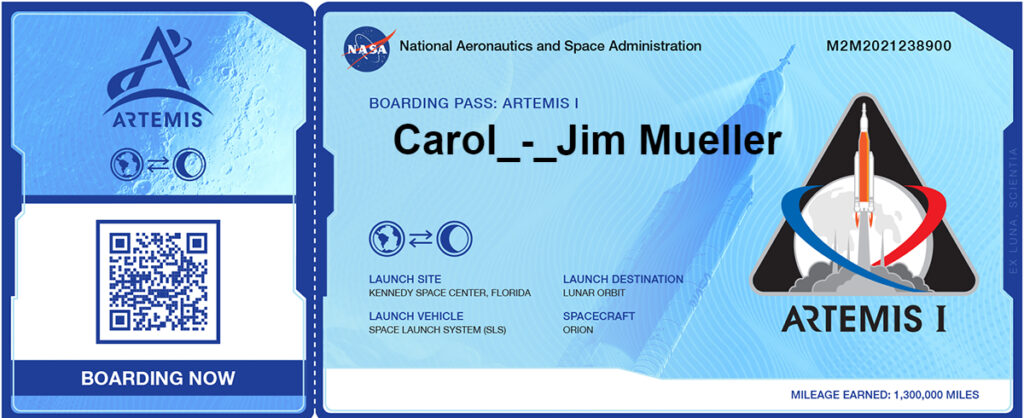
The SLS will sit on the pad until it is fully fueled and the countdown will go to T-9 seconds during the rocket’s web-dress rehearsal on April 3. Once that is completed, NASA will announce the date when the rocket will launch on the Artemis 1 mission. The mission is planned to be a 26-42 day trip to the moon and back (out 8-14 days, lunar orbit 6-19 days and back 9-19 days). The days all depend on when the rocket launches in the lunar cycle. It will deploy 10 cubesats around the moon. One of the cubesats has a Japanese lander. Lunar orbit will have a low point of 60 miles and a high point of 38,000 miles. Re-entry to Earth will be at 27,000 mph. That speed will require that the Orion capsule skip in and out of the atmosphere so that it can dissipate some of the reentry heat (LEO (Low Earth Orbit) return is only 17,500 mph and energy goes up with the square of velocity). Apollo missions were never past the Van Allen radiation belts for more than 12 days.
SLS rocket versus Starship
I am hoping that SLS will be a successful rocket. The Office of Management and Budget has estimated that the first 4 SLS launches will cost $4.1 billion each and that doesn’t include the $23 billion in 10 years of design and development costs. With that kind of price tag and the slow frequency of launches, only once every year or every 2 years, I’m worried that SLS will not be sustainable. But in the short run, the SLS has more lift to lunar orbit than any rocket and the Orion capsule is the only manned spacecraft designed to go to the moon. Hopefully, NASA can get the cost reduced. Otherwise I think SLS will lose out to the much less developed but better on paper Starship rocket from SpaceX.
Remember, we will be depending on Starship to get our first set of astronauts down to the surface of the moon. SpaceX won the $1.9 billion contract for the Human Landing System (HLS). The contract requires SpaceX to perform an unmanned test landing with Starship and then a lunar rendezvous with Orion on Artemis 3 to take astronauts down to the surface. You have to watch the entire animation of the unmanned test of Starship, it has a great surprise deployment at the very end.
At the moment, SpaceX is held up on performing its orbital test of Starship from Texas. This video explains that SpaceX might move the launch to Florida if there is too much delay on the FAA ok.
JWST Status
Next up was the exciting picture of the first star after JWST finished fine focusing. Zoom in on the picture of the star to see all the galaxies in the background. The star is 100 times to faint to be seen with the naked eye but to the telescope its brightness was over powering. None of the light would be visible to the human eye because it was in the infra-red band and the red cast on the photo was just artificially added. Astronomers said that JWST has met or exceeded all criteria for image detail and sensitivity. Resolution was stated at 17 milli-arcseconds. I never anticipated the telescope having to go thru so much focusing of its 17 hexagonal mirrors. Each mirror can be moved thru 7 degrees of freedom in steps of 1/20,000th the width of a human hair (human hair is 50,000 nanometers (billionths of a meter) and a red blood cell is 7000 nanometers in diameter). The telescope also needs to maintain its orbit around the L2 LaGrange Point every couple of weeks with short burst from its thrusters. The L2 point is a meta-stable location and requires a balancing act to remain there. If they fire the thrusters too much the telescope will start to move away from the L2 point on the other side. That would be catastrophic because the telescope can not be rotated to thrust back to the L2 point without destroying its instruments in direct solar radiation. Because the orbit insertion was so precise, astronomers think there is enough propellant remaining to keep JWST in orbit for up to 10 years. That is fabulous! It looks like we’ll get our scientific return from the $10 billion instrument’s 24 year development cost and first 5 years of operation. ESA chipped in $700 euros of that cost and provided launch costs and Canada contributed $200 million. The first true scientific picture is expected at the end of June when the telescope’s instruments are fully cooled to their operating temperatures. It’s good to see JWST realizing its potential because the Hubble Telescope is now over 31 years old and went into “safe mode” twice in 2021. You can follow the telescope’s journey thru its commissioning phases at this site and also on the blog that updates status occasionally.
Upcoming 2022 Events
Next up was upcoming events in 2022.
We’ve already talked about SLS/Orion going around the moon and JWST achieving its commissioning at the end of June. We might also see the first orbital launch of Starship. I think this will only happen this year if SpaceX can get an FAA approval to launch from Boca Chica, Texas. If they have to move the launch to Cape Kennedy in Florida, it probably will be delayed to next year. The new Vulcan rocket from ULA is still planned for the Summer. So many missions are depending on this rocket to replace the Atlas 5. Immediacy has been increased with the Russian invasion of Ukraine. It all depends when Blue Origin can provide their new BE-4 engines that the rocket needs.
Lunar missions for 2022 include the launch of the first Commercial Lunar Payload Service (CLPS) mission by NASA. The Peregrine lander from Astrobotic should launch in July and take 14 NASA instruments plus 6 rovers including the spider-like Asagumo walking rover from the UK-based company, Spacebit. Russia plans to launch its Luna 25 sample return mission also in July. This is Russia’s first moon mission since 1976. During the second half of the year, India plans its second attempt at landing with Chandrayaan-3 and its Vikram rover on the moon. India’s first attempt crashed on July 22, 2019. Japan plans to put a lander (SLIM) down near a lava tube in the Marius Hills area. Finally, South Korea plans its first lunar orbiter (KPLO) in collaboration with NASA in August.
Visits to small bodies include ESA’s Jupiter Icy Moons Explorer (JUICE) due to launch in May 2022 and arrive 7 years later. It will do 30 flybys of Europa, Ganymede and Callisto. In August, NASA’s Psyche mission should launch to the metal-rich asteroid with the same name. On October 2, NASA’s Double Asteroid Redirect Test (DART) probe should slam into the moon Dimorphos that circles the larger asteroid Didymos, becoming the first fully measured asteroid orbit modification experiment. The Juno spacecraft, already orbiting Jupiter, will also perform a close flyby of Europa on September 29 coming only 200 miles above the surface.
On Earth, the Vera Rubin Observatory in Chile should see its first light in anticipation of full operation in 2023. The 8.4 meter mirror will image so much of the southern sky each night that astronomers will be able to make movies of how things change. It will image the entire southern sky every 3 days. The observatory will help measure how Dark Matter and Energy shape the cosmos.
In human space flight, the Boeing Starliner should attempt its unmanned test flight toward the end of May and hopefully make its first manned mission later in the year. Blue Origin hopes to double the number of people (14 people in 2021) it sent on 11 minute sub-orbital missions in 2022. Virgin Galactic hopes to complete their maintenance on the space craft and resume their sub-orbital flights also. Jared Isaacman of the Inspiration4 mission, has signed a contract to do 3 more Polaris Missions with SpaceX. The first mission, called Polaris Dawn, will be an 5 day stand-alone Dragon flight with 4 people, launching this Fall. The second mission has no details but the third mission is said to be the first crewed mission on SpaceX’s new Starship. The Chinese space agency plans to complete the construction of its space station by adding the Wentian and Mengtian lab modules. India wants to fly an un-manned test of their Gaganyaan 1 crew module. The Dream Chaser’s first cargo mission to the ISS could come as early as November. The first fully private Dragon flight to the ISS should also occur with the Axion 1 mission. The 8 day mission plans to launch on April 3 with a international crew of 4 and dock with the ISS. They plan to perform dozens of scientific experiments and are definitely not just tourists floating around twiddling their thumbs.
England hopes to see the first orbital launch from its soil. The launch could occur from Spaceport Cornwall, SaxaVord Spaceport or Sutherland.
The ESA Rosalind Franklin rover will not launch this year. Troubles with Russia launching it will delay it 2 or more years.
Other NASA News
NASA just received its FY 2022 budget. The White House proposal for FY 2023 is supposed to be submitted on first Monday of February, so getting last year’s budget at this late date is a little ridiculous. The $24 billion budget is $760 million less than requested by the White House but $700 million more than NASA received in 2021. This site has a good table comparing requested versus budgeted amounts. FY 2022 started Oct 1, 2021. NASA asked $7.9 billion for science programs but only got $7.6 billion. Earth science got the biggest shortfall with $2.25 billion requested and only $2.06 billion provided. On SLS, NASA asked $2.48 billion but got $2.6 billion. $600 million of the SLS allocation is for concurrent development of the more powerful second stage (SLS Block 1B). Orion got $1.4 billion, Ground systems $590 million including $165 million for a second mobile launch platform needed for Block 1B, Space Operations got $4.017 billion, a little more than requested. HLS is fully funded at $1.195 billion (last year only 25% was provided) but NASA must explain within 30 days how redundancy will be provided. Meaning Congress wants NASA to select a second HLS provider. Commercial LEO Development was also fully funded with $101 million for the first time. This will help ISS transition to a new commercial space station and free up NASA from the $4 billion annual cost of space station support.
On Mars, the Perseverance rover had celebrated its one year anniversary on Feb 18, 2022. The rover had turned around and is backtracking to its landing point. After driving past the landing area it will head for the river delta but it has to take a wide swing around a big section of sand dunes. Ingenuity has successfully flown 21 times and will make a bee-line for the delta pathway while the rover has to drive around a region called Seitah. The rover should get to the delta in about 2 months. So far it has taken 6 core samples. The floor of Jezero is composed of igneous rock from lava flows. The rover landed with a 3 year warranty. It has set speed records with its driving at 100m/hr, 4x better than the previous Curiosity rover. This map shows where the sample cores were taken. You can trace the path of the rover and helicopter with the rover web site’s interactive map. You can also add the helicopter flight path by clicking on the “Layers” icon in the upper left of the map. Here is an interesting looking rock. Is it from a lightning strike or just a sedimentary structure?
The Parker Solar Probe just broke a speed record with a close pass to the Sun. In mid November it reached a top speed of 101 miles/sec or 364,621 mph (163 km/s or 586,000 kph) on its 10th close pass to the Sun at 5.3 million miles (8.5 million km) from the surface of the photosphere. It will perform 2 more Venus flybys in August 2023 and November 2024, to drop even closer to the Sun and pick up even more speed. It will eventually get as close as 4 million miles (6.2 million km) of the Sun and top out at a speed of 430,000 mph (690,000 kph) on that close approach.
On April 28, 2021, Parker flew into the sun’s corona. The Alfven critical surface of the Sun lies 13 million km from the surface and is the boundary between inter-planetary space and the Sun’s atmosphere. The solar wind is thought to emanate from this boundary. Studying this environment might help explain why the corona is so hot, millions of degrees, compared to the surface being only 10,000 degrees. Magnetic waves may carry the energy from the solar surface to the corona. The Alfven Surface is wrinkly with the probe passing in and out of it. Parker measured a drop in the density of charged material and an increase in the strength of the local magnetic field. Scott Manley also did a video on the subject.
In a bit of sad news, Eugene Parker for whom the Parker Solar Probe is named for, just died this week. At the time of the naming of the probe, Parker was the only living scientist to ever have a spacecraft named for him.
NASA just purchased 3 more Commercial Crew Dragon missions from SpaceX for $900 million. The new missions will be CREW 7, 8 and 9. Spacex has already launched three operational missions, CREW 1, 2 and 3. The 3 remaining contracted missions are: CREW4 scheduled for April 15, 2022; CREW 5 planned for September 2022 with potentially a Russian woman cosmonaut, and: CREW 6 expected in 2023. The contract extension is fixed price and will run thru March 31, 2028. The SpaceX original contract was for 6 mission and $2.6 billion. Boeing also got a 6-mission contract in 2014 for $4.2 billion but Starliner is still trying to complete the uncrewed testing launch. Starliner’s next uncrewed mission is scheduled for May 20, 2022. Space Force stood down on their next launch so that Starliner will be the next up on the Atlas 5 rocket. NASA paid an average of $55.4 million per seat on Soyuz between 2006 and 2020. By the end, a Soyuz seat was costing NASA $86 million. In 2019 an OIG report said that SpaceX’s average cost per seat on Dragon was estimated to be $55 million and Boeing’s Starliner seat $90 million. The 3 new missions costing $300 million for 4 seats will be $75 million per seat.
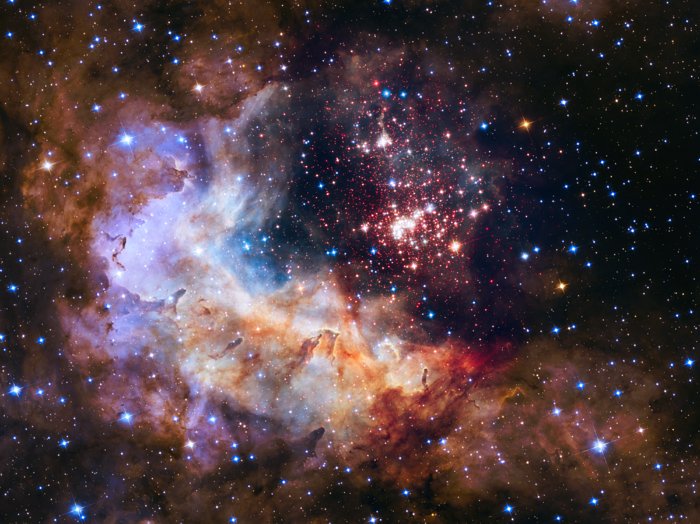
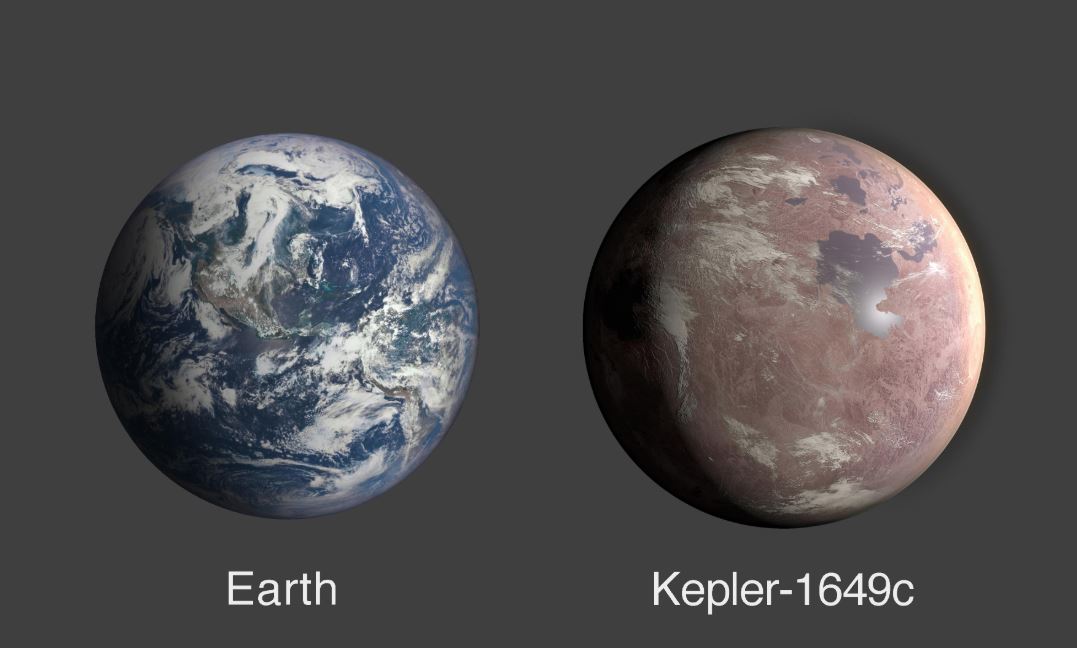
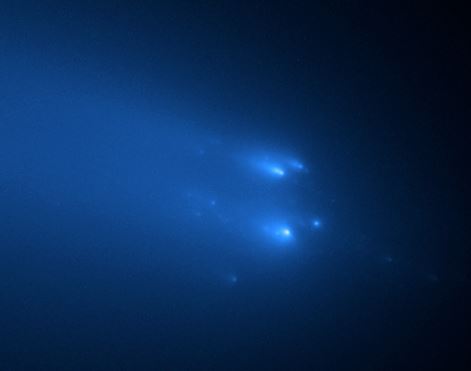
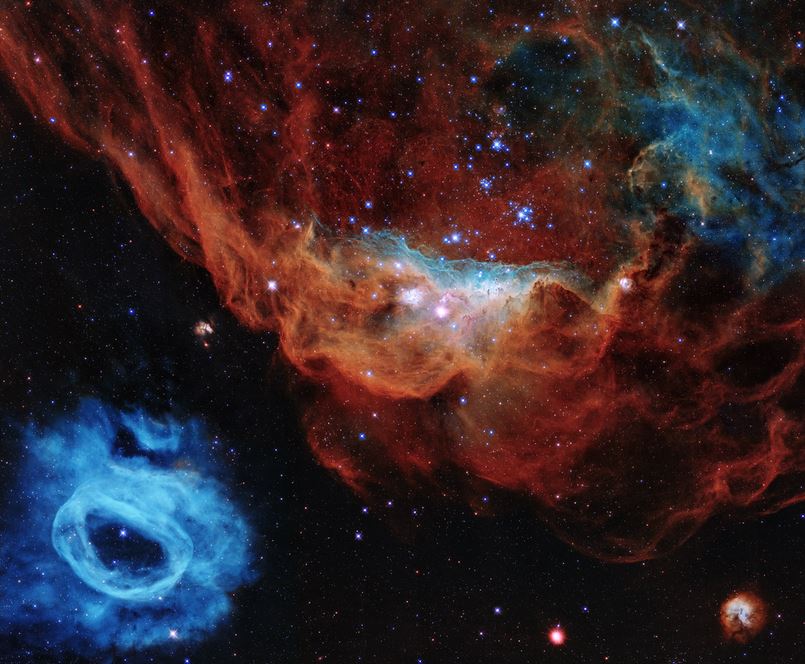
Recent Comments